Who doesn’t love a good mystery? The planet is dotted with places that are surreal, eerie, and sometimes downright bizarre. And, while many of these mysterious goings-on have logical explanations, others remain stubbornly unsolved.
Join us on a virtual tour from your sofa as we take a look at the science, stories, theories, and tales surrounding some of the Strangest Places in the World.
Strangest Places in the World
Bermuda Triangle
The Bermuda Triangle – covering around 500,000 square miles (more than 1,290,000sqkm) between Bermuda, Miami in Florida, and San Juan in Puerto Rico – has seen more than 20 planes and 50 ships crash with no obvious explanation and even some “vanish” completely.
Theories range from suggestions of supernatural activity to the more logical hypotheses that it’s down to magnetic compass variation or rogue waves.
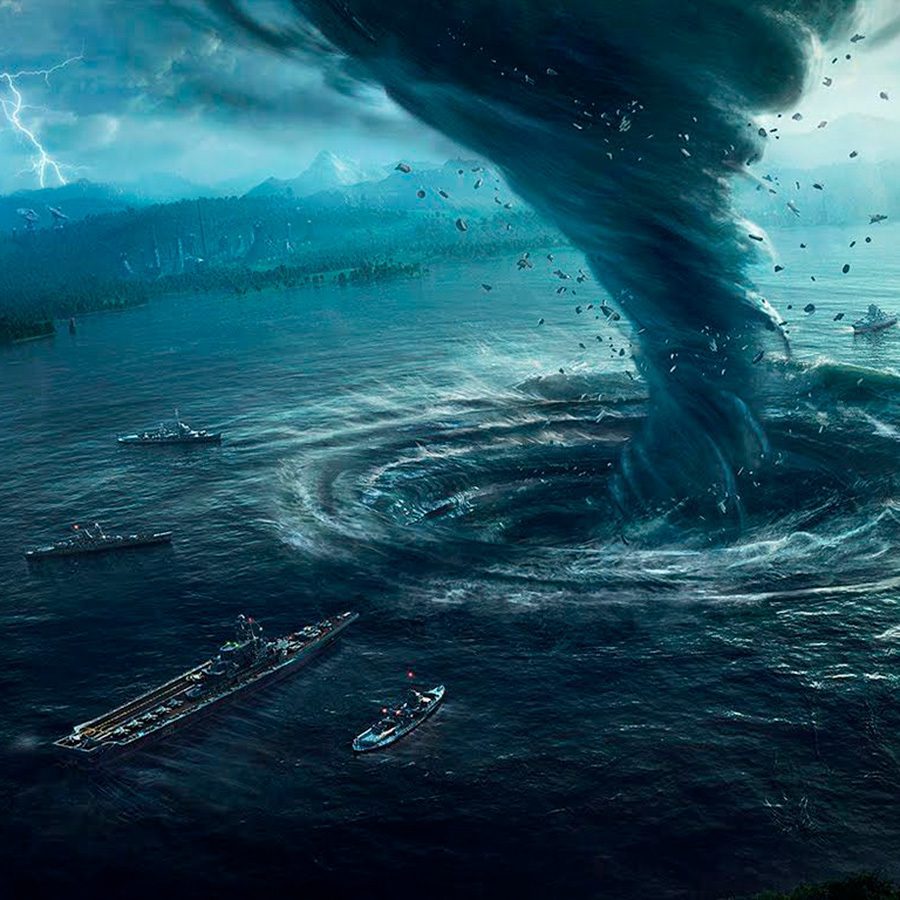
Richat Structure, Mauritania
Have you ever wondered why you never see photos of crop circles from the ground level? Every crop circle photo shows them from the air, right? That’s because, from the ground level, crop circles are rather unremarkable.
The same is true for the Eye of the Sahara.
This prominent circular feature in the Sahara desert of Mauritania has attracted attention since the earliest space missions because it forms a conspicuous bull’s-eye in the otherwise rather featureless expanse of the desert.
Astronauts have been watching the Richat Structure – also known as the Eye of Sahara – in Ouadane since humans first entered space. Viewed from the International Space Station, the 30-mile (48.2km) wide swirl resembles a bull’s eye or snail’s shell.
Described by some as looking like an outsized fossil in the desert, the structure, which has a diameter of almost 30 miles, has become a landmark for shuttle crews.
The geological quirk was believed to be a crater caused by a meteorite but it’s now thought it was once a dome that has eroded over time.
A video is making the rounds claiming “proof” that Atlantis existed in northern Africa and the Richat Structure is it. This video is by Jimmy from Bright Insight and it is an excellent example of crank pseudoscience.
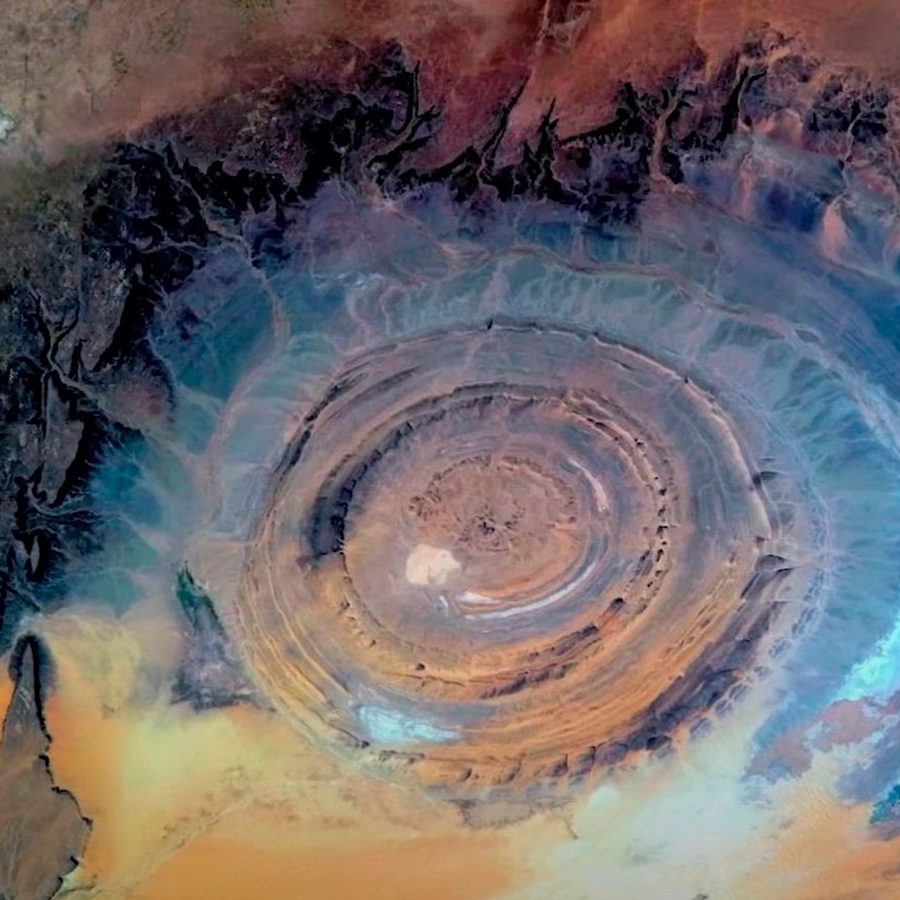
- Strangest Places in the World -
Stonehenge, England
This circle of rocks has long been one of the UK’s most well-known and mysterious sites, with historians and scientists baffled as to how its builders transported the monoliths 5,000 years ago.
In 2019, Newcastle University students may have solved the riddle when they discovered that humans (not aliens) may have dragged the rocks in place using sledges lubricated with pig fat.
Many theories have been put forward so to why Stonehenge was constructed. “It’s part of a much more complex landscape with processional and ritual activities that go around it,” Gaffney told Live Science, noting that people may have traveled considerable distances to come to Stonehenge.
One theory about Stonehenge, released in 2012 by members of the Stonehenge Riverside Project, is that Stonehenge marks the “unification of Britain,” a point when people across the island worked together and used a similar style of houses, pottery and other items.
It would explain why they were able to bring bluestones all the way from west Wales and how the labor and resources for the construction were marshaled.
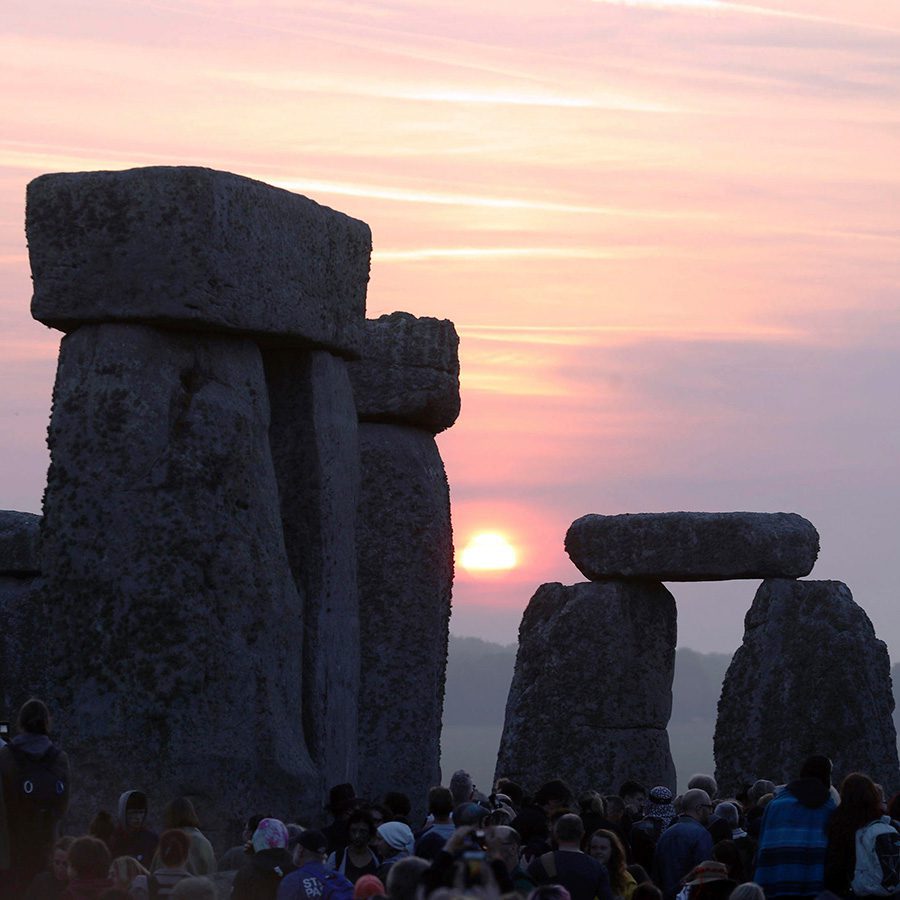
Eternal Flame Falls, New York, USA
It’s nothing to do with The Bangles’ hit song, but this is an (almost) eternal flame. The bewitching orange-red glow that flickers behind this staggering waterfall, in New York’s Chestnut Ridge Park, is kept aflame by natural methane gas that seeps through cracks in the rock. It’s occasionally extinguished by splashes but visitors can bring it back to life with a lighter.
For a long time, scientists have believed that the fire burns because of gas pockets that rise from the old, extremely hot bedrock made of shale. The rock’s high temperatures break down the carbon molecules in the shale, which in turn creates natural gas.
However, a group of scientists from Indiana University led by Professor Arndt Schimmelmann, found that the shale under the waterfall isn’t actually hot enough or old enough to be causing the formation of gas pockets.
Schimmelmann says, “This flame and these seepages have occurred for millions of years in those areas and we know that the source rock, about 400 meters deep, is not very warm.
It should not even be able to produce much gas at this temperature, yet the gas is coming and it’s not being depleted. So our hypothesis is that a different mechanism is responsible for continuous gas generation at depth.” In other words, something else must be keeping the “eternal flame” burning and to this day researchers still don’t know exactly what that may be.
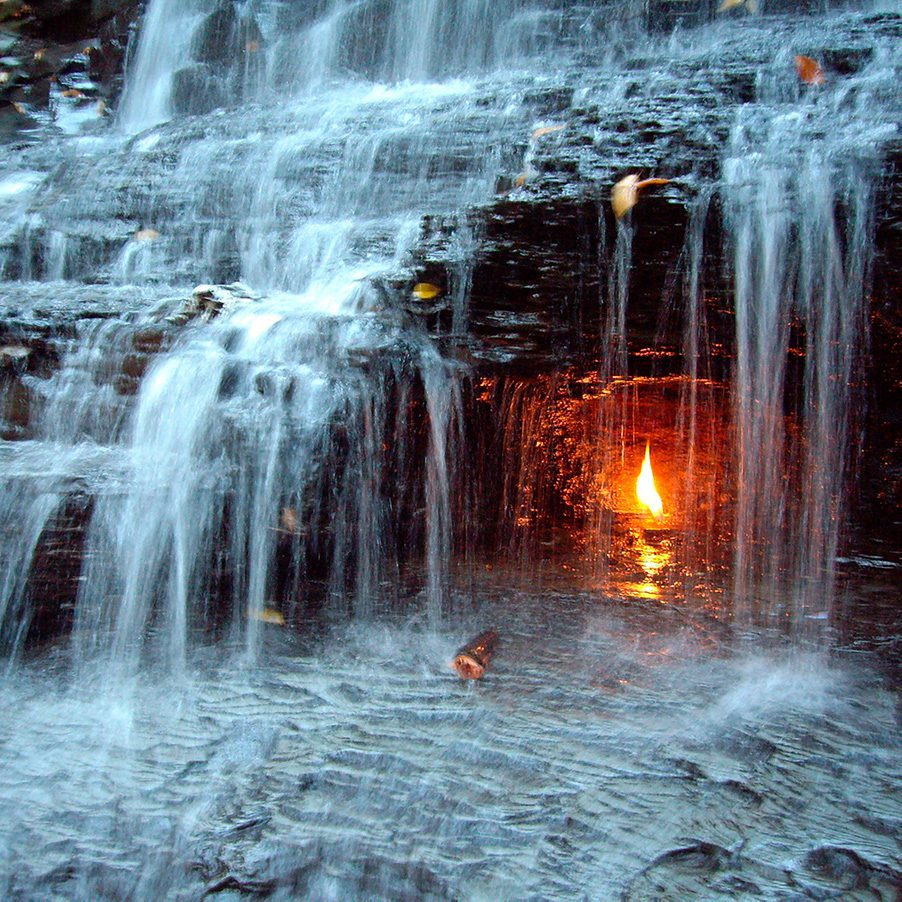
- Strangest Places in the World -
Strangest Places in the World
Magnetic Hill, New Brunswick, Canada
A mysterious spot where the laws of gravity seem not to apply. Cars roll backward and, apparently, upwards after driving to the bottom of this so-called “magnetic hill” in Moncton, New Brunswick.
But it isn’t actually defying the laws of gravity. It’s one of several hills around the globe where what looks like an uphill incline is, in fact, part of a larger downhill incline. It’s an optical illusion because there’s no view of the horizon for perspective.
This unique optical illusion has captivated residents and visitors since 1931, when newly constructed roads revealed the hill’s strange properties and local drivers shared the experience of drifting uphill. Soon, people were coming in from the surrounding towns to see the bizarre phenomenon for themselves, and in time, the Moncton Magnetic Hill spawned its own cottage industry with thousands of visitors yearly.
The area around the hill itself has been built up with a variety of other attractions, including the Magnetic Hill water park, Magic Mountain Fun Zone, Magnetic Hill concert site, and you can visit the Magnetic Hill Zoo’s animals.
This definitely belongs on our list of the Strangest Places in the World.
Lonar Lake, India
Almost 50,000 years ago, a meteorite slammed into the earth in the Indian state of Maharashtra, leaving behind a massive crater 2km across and 170m deep that’s said to be the world’s third-largest). According to scientists, it’s the only hypervelocity natural-impact crater in basaltic rock in the world.
An ancient lake in India just turned pink – and experts don’t know why
What caused the lake to turn pink?
That was the question on people’s minds across India after Lonar Lake in the state of Maharashtra suddenly changed hues in recent days.
Experts believe that the change is likely due to either increased salinity in the water, the presence of algae or a combination of both – like parts of Utah’s Great Salt Lake or Lake Hillier in Australia.
Gajanan Kharat, a local geologist, said in a video posted to Maharashtra Tourism’s Twitter feed that this has happened before, but was not as prominent.
“It’s looking particularly red this year because this year the water’s salinity has increased,” he said. “The amount of water in the lake has reduced and the lake has become shallower, so the salinity has gone up and caused some internal changes.”
Kharat said that researchers are also investigating if the presence of red algae caused the color change.
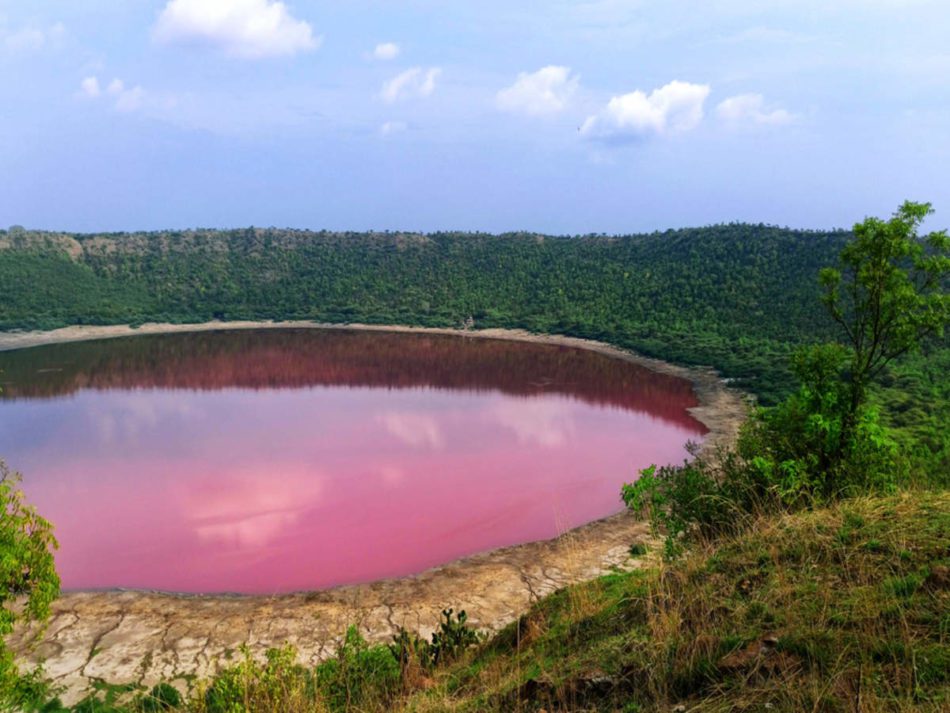
Rainbow Mountains of China, Zhangye Danxia Landform Geological Park
The spiraling and colorful lunar landscape of this national park is the result of sandstone and mineral deposits that have eroded into odd shapes throughout millennia. Infrastructure was installed inside the park after it was named a national geopark in 2011, making it accessible to tourists.
Wooden stairs and platforms allow visitors to reach the tops of the hills without damaging the delicate landscape and offer views over the colored strata.
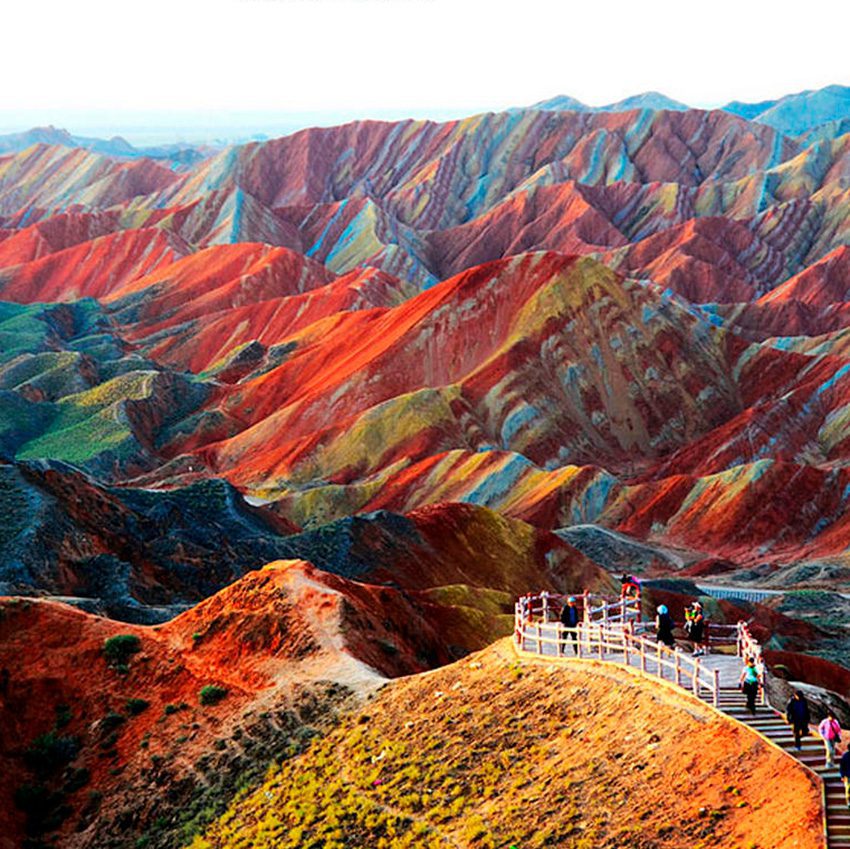
Strangest Places in the World
Pamukkale, Turkey
If you do a Google search for the top attractions to see in Turkey, the hot springs of Pamukkale will 100% appear very close to the top of the list. The natural rock pools of Pamukkale are one of Turkey’s most visited destinations and also one of the most gorgeous.
If weird and beautiful sights are your things, this is for you. However, this spot isn’t just a little odd and very wonderful. It’s also stunningly beautiful.
No doubt, you’ve seen Pamukkale on the TV or online. It’s blindingly white, has terraces that run down a mountainside, and glassy blue water on top. Of course, Pamukkale is far more than that, but that’s the eye-watering visual you’ll get when you see a picture of it for the first time!
When you see a picture of the Pamukkale thermal pools landscape, you’ll be forgiven for experiencing a little confusion. It’s the middle of summer (probably), and all you’re seeing is a snowy white landscape.
Located in the southwestern Turkish province of Denizli, Pamukkale is the site of the ancient city of Hierapolis, a Greco-Roman city that used to be bustling back in the day. This whole part of Turkey is packed with ruins from Greek times, and they’re certainly worth visiting and a great addition to our list of the Strangest Places in the World!

Strangest Places in the World
Uluru, Australia
Strangest Places in the World
Uluru or Ayers Rock, in Uluru-Kata Tjuta National Park in Australia’s Northern Territory, has beguiled people for centuries and is a sacred spot for Anangu people, with theories that it was formed by ancestral beings who shaped the world.
Science suggests the sandstone monolith began forming around 550 million years ago, and centuries of erosion and folding crafted its distinctive oval shape. Its red surface is due to oxidation, while “fresh” rock beneath is grey.
Indigenous Australians believe Uluru and nearby Kata Tjuta to be the center of all Dreaming. Traditionally, this area was seen as something like the hub of a wheel, with songlines radiating from it across the land. The monoliths, with their crinkles, creases, indentations, and ancient drawings, provide a map of ancestors’ births, battles, and deaths.
Uluru (Ayers Rock) is usually found on the travel wish-list of even the most stay-at-home Aussie and no matter how many pictures you’ve seen, nothing will prepare you for your first views of the spectacular rock formation, which is as tall as an 85-story building with a circumference of nearly 10 kilometers.
The traditional owners of Uluru, the Anangu community, have long since urged people to circumnavigate the rock on foot, rather than climb it due to its spiritual significance and for their own safety. It wasn’t until October 2019 that the climbing ban officially came into effect – and with good reason.

Strangest Places in the World
Blood Falls, Antarctica
As you slowly make your way through the Dry Valleys of McMurdo in Antarctica, battling the relentless katabatic wind, you suddenly feel your stomach squirm and your hands shoot up to stifle the scream escaping your half-frozen lungs. The vision that grips you is beyond a reasonable doubt, a gush of blood, lots of blood!
A five-storey tall, blood-red waterfall pours very slowly out of the Taylor Glacier, oozing away menacingly like a scene straight out of a horror movie. No, your eyes do not deceive you. And no, this has nothing to do with Game of Thrones either. The vision you see are the spectacular Blood Falls of Antarctica.
Discovered in 1911 by Australian explorer and geologist Griffith Taylor, this waterfall had scientists in a tizzy for a long time. There were some schools of thought which believed the red colour came from algae but the true nature of these mysterious falls was discovered in 2009. After extensive study of the McMurdo Dry Valley region, which is one of the coldest and most inhospitable places on Earth, Geomicrobiologist Jill Mikucki published this widely accepted interpretation.
Nearly two million years ago, a small body of water containing an ancient community of microbes was sealed beneath the Taylor Glacier forming a natural time capsule. Over the course of these two million years, the microbes evolved independently from the rest of the world with no light or free oxygen, trapped under a thick layer of ice. The very high salinity and rich iron content gave this trapped lake its characteristic red colour and a fissure in the glacier allowed the sub-glacial lake to slowly flow out into Lake Bonney.
Just imagine the hair-raising view you will experience as you witness this amazing natural phenomenon. These spectacular falls prove the great diversity of the earth’s ecology and proves the Antartic is one of the Strangest Places in the World by far.

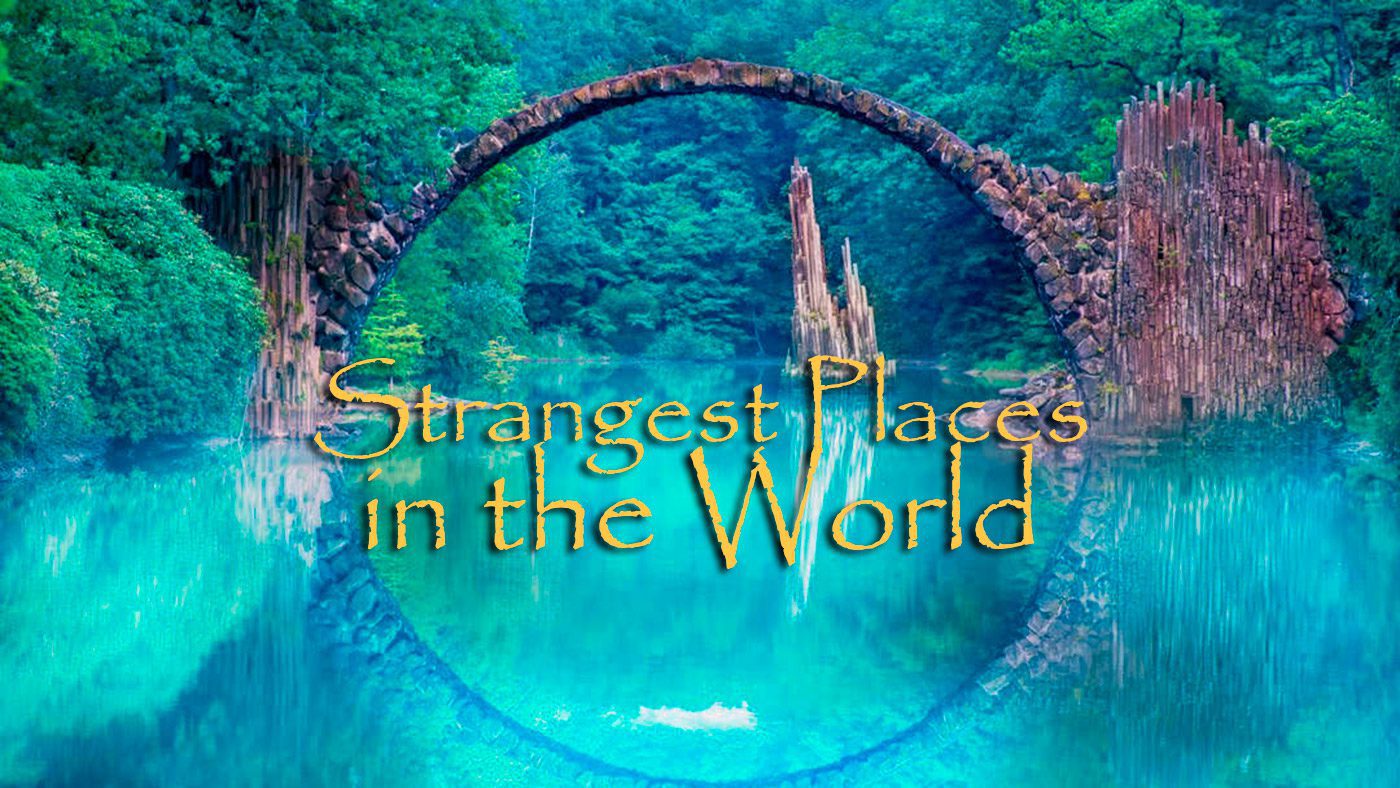




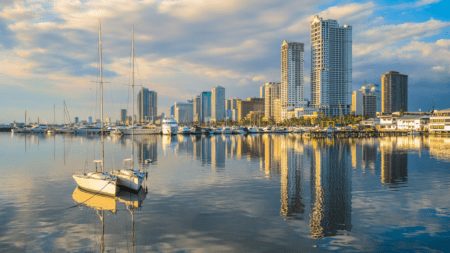





Great post, I conceive blog owners should acquire a lot from this web blog its real user pleasant.
My spouse and i got so joyous Edward could carry out his investigation through the entire ideas he came across while using the weblog. It is now and again perplexing to just always be giving for free techniques which usually others might have been selling. We really remember we’ve got you to appreciate for this. The main explanations you’ve made, the easy website navigation, the relationships your site aid to create – it’s got mostly wonderful, and it is aiding our son in addition to the family feel that this issue is exciting, which is certainly very fundamental. Thank you for all the pieces!
Excellent read, I just passed this onto a colleague who was doing a little research on that. And he just bought me lunch because I found it for him smile Therefore let me rephrase that: Thanks for lunch!
It’s difficult to acquire knowledgeable individuals during this topic, but the truth is be understood as guess what happens you’re dealing with! Thanks
I needed to send you one very little remark just to thank you so much once again about the superb information you have contributed above. It is remarkably generous with people like you to present freely exactly what a few people could possibly have made available as an ebook in making some bucks for their own end, notably considering that you might have tried it in case you desired. The pointers as well worked to provide a easy way to know that most people have the same zeal just as my personal own to see whole lot more with regards to this problem. I’m certain there are a lot more fun moments in the future for many who looked at your blog.
Nearly all goods are typically hand designed plus subsistence economic local weather dominates. Individualism is really weakly manufactured within just persons ethnicities given that are typically interpersonal programs. Unaltered customers ethnicities no extra can be determined inside industrialized nations much like the Usa plus North america.
Howdy! Would you mind if I share your blog with my myspace group? There’s a lot of people that I think would really enjoy your content. Please let me know. Cheers
Hi, thanks so much for reaching out. I’d be delighted if you shared my blog with your Myspace group. It’s wonderful to hear that you think your group would enjoy the content. Feel free to share it widely! Cheers
I truly appreciate this post. I have been looking everywhere for this! Thank goodness I found it on Google. You have made my day! Thx again..
Youre so cool! I dont suppose Ive learn anything like this before. So good to seek out any person with some unique ideas on this subject. realy thanks for starting this up. this website is something that’s needed on the net, someone with a bit of originality. useful job for bringing something new to the web!
Hey. Very nice web site!! Guy .. Excellent .. Wonderful .. I will bookmark your website and take the feeds additionally…I am satisfied to locate numerous useful information right here within the post. Thank you for sharing..
I like the way you conduct your posts. Yessir!
Can I just now say such a relief to discover one who truly knows what theyre dealing with on-line. You actually know how to bring a concern to light and earn it important. Lots more people have to look at this and see why side of the story. I cant think youre not more popular because you certainly develop the gift.
Thanks for the good critique. Me & my cousin were just preparing to do some research about this. We got a book from our local library but I think I’ve learned more from this post. I’m very glad to see such great info being shared freely out there…
Good an very informative post. I will come back to your blog regullary.
May possibly not seem to be much if you aren’t in the situation that we are. Your thinking is vital in aiding me with my study. Having more writers be part of the discussion is usually a positive thing.
Thank you for this specific facts I was basically seeking all Msn in order to find it!
Wow, wonderful blog layout!
How lengthy have you been running a blog for? you made running a blog glance easy.
The full look of your site is fantastic, let alone the content material!
You can read similar here prev next
and that was wrote by Jerry80.
Wow, incredible weblog format!
How long have you been running a blog for? you made running a blog glance easy.
The full glance of your website is great, as neatly as the content!
You can read similar here prev next and those was wrote by Vince84.
Wow, superb weblog structure! How lengthy have you ever been running a blog for?
you make blogging look easy. The total glance of your web site
is wonderful, as neatly as the content material!
You can see similar here najlepszy sklep
Hey! Do you know if they make any plugins to help with SEO?
I’m trying to get my website to rank for some targeted keywords but I’m not seeing very good
success. If you know of any please share. Appreciate it!
You can read similar art here: AA List
Hi there! Do you know if they make any plugins to help with SEO?
I’m trying to get my blog to rank for some targeted keywords
but I’m not seeing very good results. If you know
of any please share. Thanks! You can read similar text here:
Najlepszy sklep
It’s very interesting! If you need help, look here: ARA Agency
Hi! Do you know if they make any plugins to assist with Search
Engine Optimization? I’m trying to get my blog to rank for
some targeted keywords but I’m not seeing very
good success. If you know of any please share. Appreciate
it! You can read similar blog here: E-commerce
Wow, wonderful weblog layout! How long have you been running a blog for?
you made blogging glance easy. The whole look of your website is magnificent, let alone the content!
You can see similar: dobry sklep and here najlepszy sklep